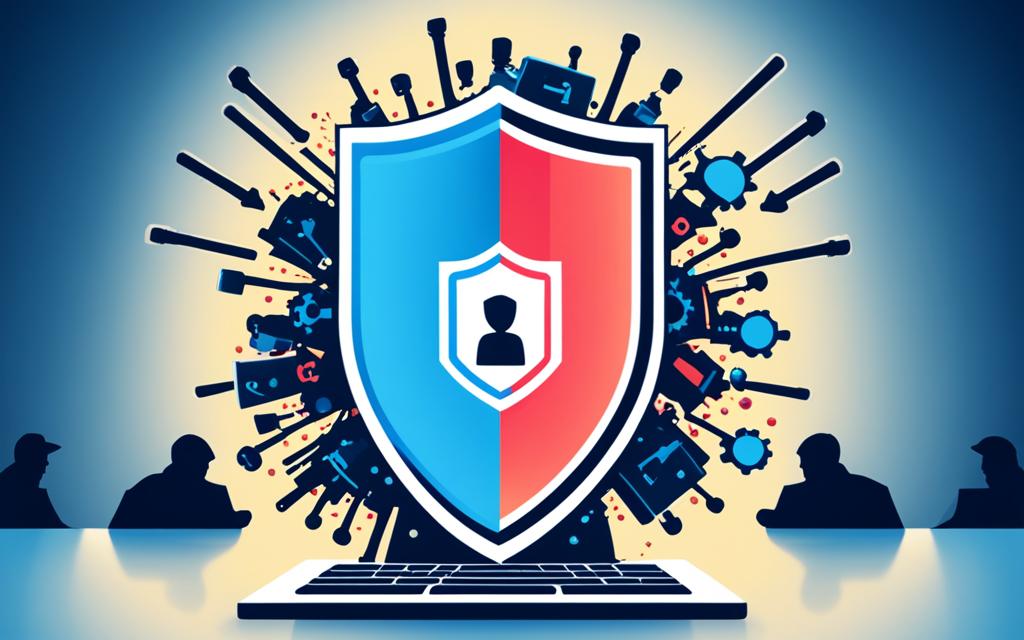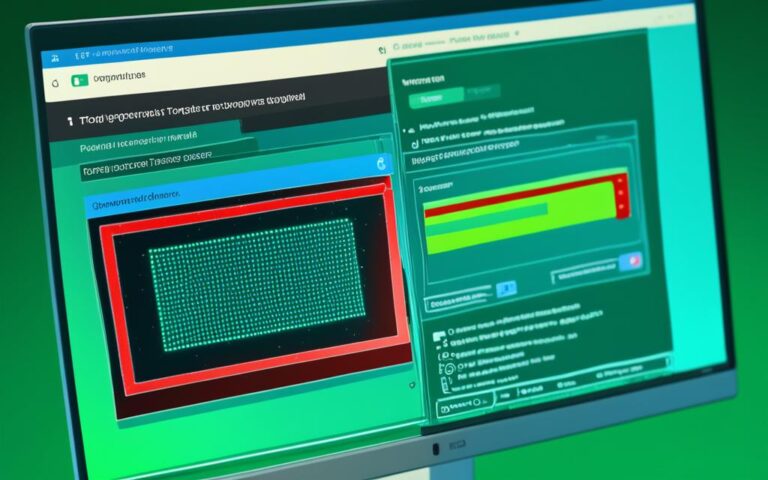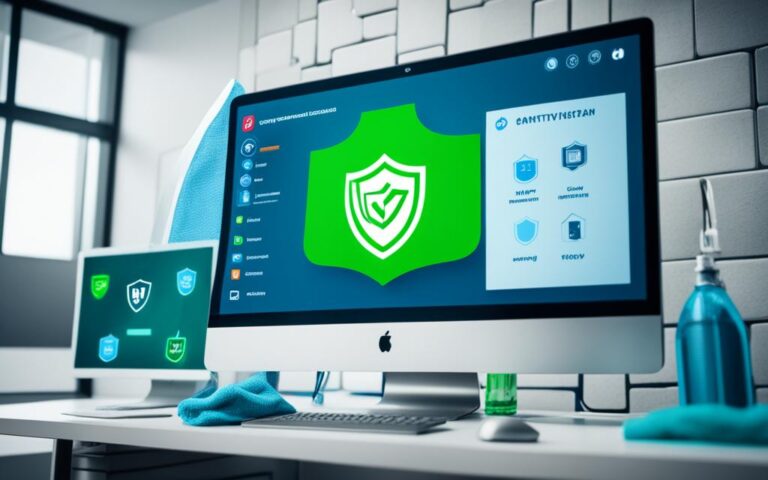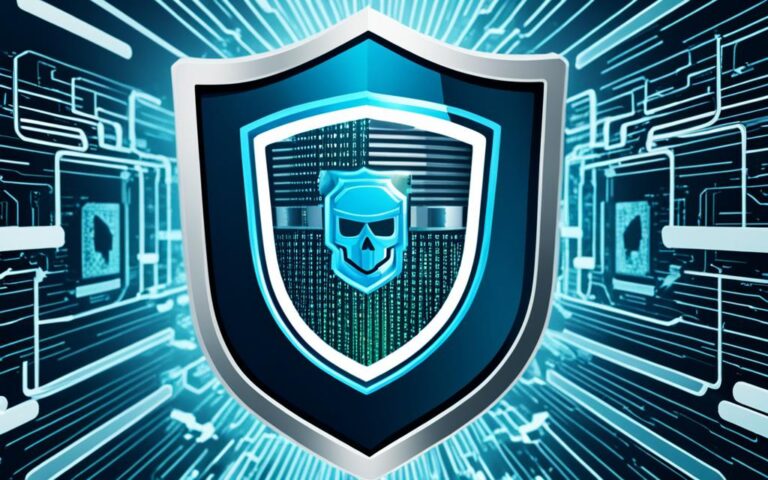Ransomware Eradication: Preparing for the Worst
With the increasing prevalence of cyber threats, organizations must prioritize their safety planning to defend against the destructive impacts of ransomware attacks. Ransomware poses a significant risk to businesses, as it has seen a significant surge in occurrences over the past decade. To ensure the safety and security of your organization’s digital infrastructure, adopting effective defence tactics is crucial.
To mitigate the risks of ransomware attacks, organizations should adopt a proactive approach to cybersecurity and prioritize preparation, limitation, and prevention. By implementing a cybersecurity framework, like the Microsoft cloud security benchmark, you can establish robust security controls to safeguard your Azure environment. Additionally, educating end-users and security operations teams about the dangers of ransomware will strengthen your organization’s defence against these malicious cyber threats.
By making it harder for attackers to gain access to your systems, focusing on privileged account controls, and having a robust plan in place for worst-case scenarios, you can better equip your organization in the face of a ransomware attack. Furthermore, with effective response and recovery measures, such as strong backup and incident response plans, you can limit the scope of damage and minimize the impact on critical business assets.
By preparing for the worst and continuously evaluating and improving your cybersecurity measures, you can enhance your organization’s resilience to ransomware attacks. Stay ahead of evolving cyber threats and prioritize ransomware safety planning to safeguard your business and ensure its uninterrupted operation.
Adopting a Cybersecurity Framework
Adopting a cybersecurity framework, such as the Microsoft cloud security benchmark, provides organizations with guidance on how to configure Azure and Azure Services and implement security controls. This framework is based on industry-based security control frameworks like NIST SP800-53 and CIS Controls v7.1.
Within the Microsoft cloud security benchmark framework, organizations can address various security domains, including:
- Network security
- Identity management
- Data protection
- Endpoint security
By adopting the Microsoft cloud security benchmark framework, organizations can reduce and better manage cybersecurity risks in their Azure environment, aligning their security controls with industry best practices.
Prioritizing Mitigation
When it comes to mitigating the risks of ransomware attacks, prioritization is key. Organizations should prioritize preparation, limitation, and prevention. This means assuming breach and focusing on reliably mitigating the most damage first. While prevention is the preferred outcome, it is important to prepare for the worst-case scenario and establish frameworks to contain and prevent attackers’ ability to access and encrypt data. This prioritization aligns with the Zero Trust principle, as organizations should not rely solely on perimeter defenses but should instead focus on protecting and monitoring their assets from within.
Assuming Breach and Reliable Mitigation
Adopting the Zero Trust principle means assuming that attackers are already present within the organization’s network. Instead of solely relying on traditional perimeter defenses, organizations must prioritize investing in monitoring and mitigating the most severe damages caused by a potential breach. By focusing resources on reliable mitigation strategies, organizations can minimize the impact of a ransomware attack and prevent further escalation.
Preparation for the Worst-Case Scenario
Alongside reliable mitigation, organizations must prepare for the worst-case scenario. This involves developing robust frameworks that contain and prevent attackers from accessing critical data. By implementing comprehensive backup and recovery solutions, organizations can restore their systems quickly in the event of a ransomware attack. Moreover, having an incident response plan in place enables organizations to efficiently respond to ransomware incidents, minimizing the potential damage and recovery time.
“It is better to be prepared for an opportunity and not have one than to have an opportunity and not be prepared.” – Les Brown
Adherence to the Zero Trust Principle
The Zero Trust principle suggests that organizations should implement a security approach that verifies and monitors every request, regardless of whether it originates from within or outside the network perimeter. By adopting this principle, organizations limit access to sensitive data only to authorized personnel, preventing ransomware attackers from exploiting vulnerabilities in their network. This approach adds an extra layer of security, making it harder for attackers to infiltrate and propagate ransomware.
| Benefits of Prioritizing Mitigation | How to Achieve Them |
|---|---|
| Minimize financial losses | Invest in reliable mitigation strategies |
| Protect sensitive data | Implement comprehensive backup and recovery solutions |
| Reduce downtime | Create and test an incident response plan |
| Enhance overall cybersecurity posture | Follow the Zero Trust principle |
By prioritizing preparation, limitation, and prevention, organizations can effectively mitigate the risks associated with ransomware attacks. Incorporating the Zero Trust principle into their cybersecurity strategy provides an added layer of protection, ensuring that sensitive data remains secure. By following these practices and investing in robust mitigation strategies, organizations can significantly reduce the potential impact of ransomware attacks.
Making it Harder to Get In
To prevent entry and respond rapidly to ransomware incidents, organizations must prioritize security hygiene and implement robust protection, detection, and response controls. By taking these measures, they can effectively thwart attackers and minimize the impact of ransomware attacks.
Preventing Entry:
Enhancing security hygiene is crucial for making it harder for ransomware attackers to gain access. This involves reducing the attack surface and managing threats and vulnerabilities. By implementing security best practices, such as regular patching, strong password policies, and network segmentation, organizations can strengthen their defenses and minimize the chances of a successful ransomware attack.
Rapid Response:
Responding swiftly to ransomware incidents is paramount to containing the damage and minimizing the impact on critical systems. By implementing detection mechanisms, such as intrusion detection systems (IDS) and security incident and event management (SIEM) solutions, organizations can quickly identify and evict attackers from their networks. Additionally, having a well-defined incident response plan and trained incident response teams can ensure a coordinated and effective response to ransomware attacks.
Protection, Detection, and Response Controls:
Implementing robust protection, detection, and response controls is crucial for safeguarding digital assets against ransomware attacks. Organizations should leverage advanced technologies, such as next-generation firewalls, endpoint protection platforms, and email security gateways, to proactively detect and block ransomware threats. Additionally, implementing real-time threat intelligence feeds and security analytics solutions can provide valuable visibility into attacker activity, enabling organizations to respond swiftly and effectively.
“The key to preventing successful ransomware attacks lies in implementing a multi-layered security approach that focuses on prevention, detection, and response. By combining robust protection measures, proactive threat detection, and rapid incident response capabilities, organizations can significantly enhance their security posture and prevent attackers from gaining a foothold.”
By following these preventive measures and leveraging comprehensive security controls, organizations can make it significantly harder for ransomware attackers to gain entry and disrupt critical systems. The adoption of a proactive security approach, coupled with rapid incident response capabilities, is crucial to minimizing the impact of ransomware attacks and protecting valuable digital assets.
| Steps to Make it Harder for Ransomware Attackers |
|---|
| Enhance security hygiene by reducing the attack surface and managing threats and vulnerabilities |
| Implement comprehensive protection measures such as next-generation firewalls and endpoint protection platforms |
| Employ proactive threat detection mechanisms like intrusion detection systems and security incident and event management solutions |
| Incorporate real-time threat intelligence feeds and security analytics solutions to gain visibility into attacker activity |
| Establish a well-defined incident response plan and a team of trained incident responders |
Limiting the Scope of Damage
In the event of a ransomware attack, organizations must take proactive measures to limit the scope of damage and protect their critical resources. By implementing strong controls for privileged accounts, closely monitoring incidents, and having robust backup and recovery capabilities, organizations can effectively mitigate the impact of a ransomware attack and ensure a swift incident response.
Strong Controls for Privileged Accounts
Privileged accounts, such as IT Admins, often have extensive access and control over an organization’s systems and data. To prevent attackers from gaining complete access to critical resources, organizations should establish strong controls for these privileged accounts. This includes:
- Tightly protecting privileged account credentials with strong passwords and multi-factor authentication.
- Regularly reviewing and updating access privileges to maintain the principle of least privilege.
- Implementing robust identity and access management (IAM) policies and procedures.
- Closely monitoring and auditing privileged account activity to detect any suspicious or unauthorized actions.
Rapid Incident Response
In the face of a ransomware attack, time is of the essence. Organizations need to respond swiftly and effectively to minimize the impact. A well-defined incident response plan is essential for guiding the actions of the incident response team. The plan should include:
- Clearly defined roles and responsibilities for different team members.
- A detailed escalation process to ensure prompt escalation of critical incidents.
- Procedures for isolating infected systems and containing the spread of the ransomware.
- Regularly tested backup and recovery processes to ensure data can be restored quickly.
- Coordination with law enforcement agencies and incident response specialists, if necessary.
Robust Backup and Recovery Capabilities
One of the most effective ways to limit the impact of a ransomware attack is to have robust backup and recovery capabilities in place. Organizations should regularly back up critical data and ensure that backups are stored securely and independently from the main network. This allows organizations to restore data and systems to a pre-attack state quickly. Key considerations for backup and recovery include:
- Regularly testing backup integrity to ensure the data can be restored successfully.
- Implementing a backup retention policy that aligns with business requirements and compliance regulations.
- Using backup solutions that offer encryption and authentication to protect against unauthorized access to backup data.
- Establishing a clear recovery process that outlines the steps to be followed in the event of a ransomware attack.
| Benefits of Strong Controls, Incident Response, and Backup and Recovery | Actions |
|---|---|
| Increased Security: | Implement strong controls for privileged accounts to minimize the risk of unauthorized access and data encryption. |
| Rapid Detection and Response: | Closely monitor privileged account activity to detect and respond to any suspicious or unauthorized actions promptly. |
| Minimized Downtime: | Have robust backup and recovery capabilities to restore critical systems and data quickly. |
| Effective Incident Mitigation: | Follow a well-defined incident response plan to contain and mitigate the impact of a ransomware attack. |
Preparing for the Worst
When it comes to ransomware attacks, it is crucial for organizations to be prepared for the worst-case scenario. By taking proactive measures, they can effectively mitigate the risks and minimize the impact of such attacks on their critical business assets.
One important step in preparation is to register ransomware as a high likelihood and high impact scenario in the risk register. This allows organizations to prioritize their efforts and allocate resources accordingly. By recognizing ransomware as a significant threat, they can develop specific strategies to counter it.
Defining and backing up critical business assets is another essential aspect of preparation. Identifying the most valuable data and ensuring it is regularly backed up helps safeguard against potential loss or encryption by ransomware. By frequently backing up this data, organizations can recover from a zero-functionality state and continue their operations swiftly.
Reducing on-premises exposure is also a vital step in preparing for ransomware attacks. By moving data to cloud services that offer automatic backup and self-service rollback, organizations can minimize their vulnerability to attacks on their local infrastructure. This shift to the cloud not only increases security but also provides flexibility and scalability.
Preparing for the Worst: Key Steps
- Registering ransomware as a high likelihood and high impact scenario in the risk register.
- Defining and regularly backing up critical business assets.
- Testing the ability to recover from a zero-functionality state.
- Reducing on-premises exposure by moving data to cloud services with automatic backup and self-service rollback.
By taking these steps, organizations can limit the potential damage caused by ransomware attacks and enhance their ability to recover swiftly and effectively.
Now let’s take a look at some real-world examples of organizations that successfully prepared for the worst and safeguarded their critical business assets.
“Our organization recognized the worst-case scenario of a ransomware attack and implemented a risk register that highlighted the potential impact. We also ensured regular backups of our critical assets, both locally and on cloud services. This preparation allowed us to recover quickly and minimize any impact on our operations.”
| Company | Risk Register | Critical Business Assets | Backup Strategy | Cloud Migration |
|---|---|---|---|---|
| Company A | ✓ | ✓ | ✓ | ✓ |
| Company B | ✓ | ✓ | ✓ | ✓ |
| Company C | ✓ | ✓ | ✓ | ✓ |
These organizations prioritized worst-case scenario preparation by including ransomware in their risk registers and implementing strategies to protect critical business assets. They also ensured robust backup strategies and reduced on-premises exposure by migrating to cloud services.
By following their example, organizations can proactively prepare for ransomware attacks and minimize the potential damage they may cause.
Conclusion
Ransomware attacks present a significant risk to organizations, requiring proactive measures to effectively mitigate these threats. By adopting a comprehensive cybersecurity framework and prioritizing risk mitigation strategies, organizations can enhance their resilience to ransomware attacks.
Mitigation efforts should focus on making it increasingly challenging for attackers to gain unauthorized access to sensitive systems and limiting the scope of damage in the event of an attack. This involves implementing robust security controls, such as strong authentication measures and strict access controls for privileged accounts.
Furthermore, organizations should be prepared for the worst-case scenario by registering ransomware as a high-priority risk, defining critical business assets, and regularly backing up essential data. By reducing on-premises exposure and leveraging cloud services with automatic backups, organizations can quickly recover from a ransomware attack.
Continual vigilance, education of end-users and security teams, and the evaluation and improvement of cybersecurity measures are key to staying one step ahead of evolving ransomware threats. By implementing these essential cybersecurity measures, organizations can enhance their resilience to ransomware and ensure the protection of critical data and systems.












